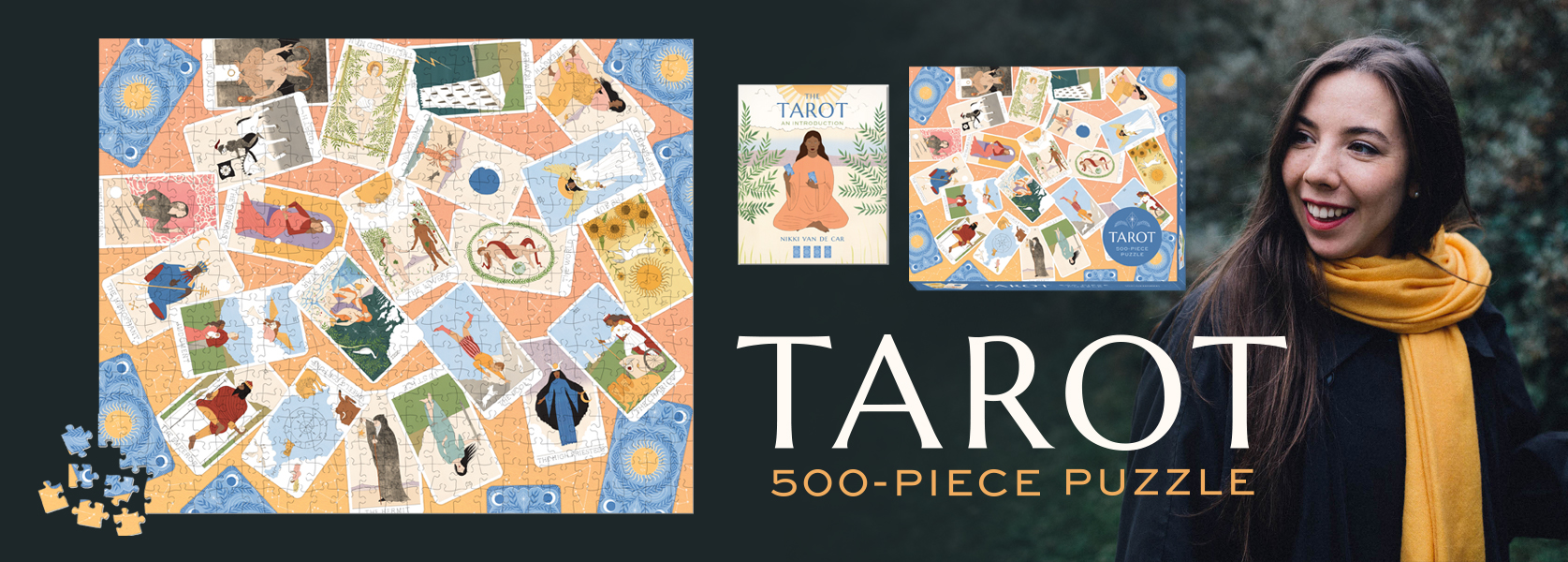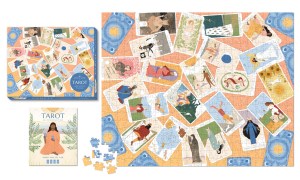Piecing Together Tarot with Illustrator Harriet Lee-Merrion
Take a glimpse into the inspiration behind the new Tarot 500-Piece Puzzle with award-winning author and illustrator Harriet Lee-Merrion.

What inspires your illustrated work in general? And what inspiration did you draw on for this tarot puzzle?
Harriet Lee-Merrion: One of my biggest influences is literature and I find a lot of inspiration in fiction and poetry. I’ve always loved the idea that illustration can depict intangible things such as thoughts, theories, or emotions. I enjoy creating worlds where rich narratives or meaning can be built into a drawing, and I like the notion that an audience can share this imagined landscape. I am influenced by a variety of different sources, from contemporary film to ancient art. To note a few I particularly love: Indian miniature paintings, Japanese woodblock prints, Hitchcock films, folk tales, mythology, Pre-Raphaelite paintings, Modernist architecture, the list goes on.
What is your own background with tarot? Are you already familiar with the practice of tarot reading or is this a new realm for you?
HLM: As an illustrator, I am obsessed with early forms of visual communication, and regarding Tarot, I’m fascinated by the rich history, symbolism, and archetypical imagery within the cards.
How did you develop the design direction for the illustration of this tarot puzzle?
HLM: There’s been many interpretations of Tarot cards by numerous artists dating back as early as the 15th century, and the canon has a distinct visual convention consisting of characters, symbols, and archetypes. Approaching the design process here was interesting because unlike other projects I work on, where the aim is to create unique compositions, here the aim was to create an original rendition of something that already has a set of visual rules. Here it was important to include imagery specific to Tarot arranged in certain formations, essential for interpretation of a card. So, the challenge lay in creating something new, based off something that already exists, while retaining the identifiable aspect of Tarot cards, because the ultimate goal was to produce the images out of context on a jigsaw puzzle.
How did the art of tarot cards inspire or inform your illustration?
HLM: Inspiration for this project came from researching many renditions of Tarot cards that have been produced over the centuries. A great many decks feature the iconic emblems and figures composed by different artists and drawn with different hands. I felt it was important to carry forward the most classic and recognizable features in this depiction, while also feeling the need to modernize by including diverse characters of different ethnicities, as many previous editions depict only white characters.
What are some of your most loved tarot cards?
HLM: I particularly like The Star, and The Lovers, as well as The World.
What do you think magical practices like tarot can offer modern mystics?
HLM: The magic that people find in mystical practices has always fascinated me, skeptic or not. I think they offer interesting spaces that can allow for self-exploration and self-awareness.
- 500-PIECE PUZZLE: Printed on high-quality stock, this full-color puzzle includes 500 printed pieces that highlight tarot cards and readings. Finished puzzle measures approximately 16 X 20".
- BEAUTIFUL ILLUSTRATIONS: Beloved cards of the Major and Minor Arcana (The Star, The Lovers, etc.) are represented on this stunning puzzle image.
- DELUXE CASE: This puzzle comes housed in a fully-illustrated box (wafer-sealed) for secure storage.
- BONUS BOOKLET: Flip through an informative, 32-page illustrated booklet (5 X 6") complete with information on all 78 cards and classic readings to perform (Past-Present-Future, Celtic Cross, etc.)





